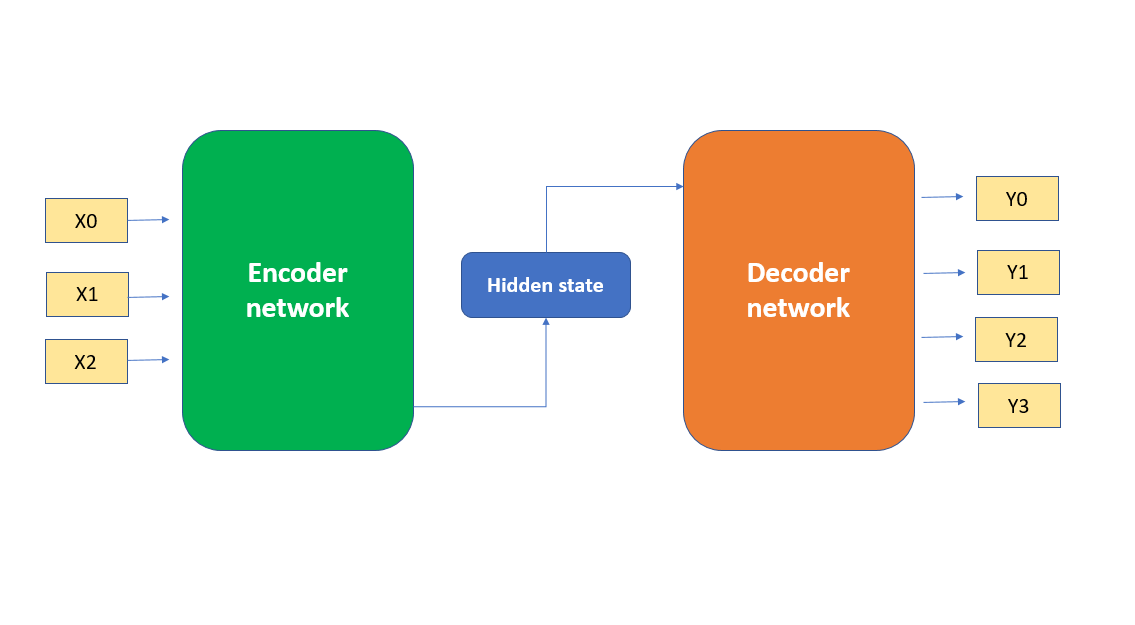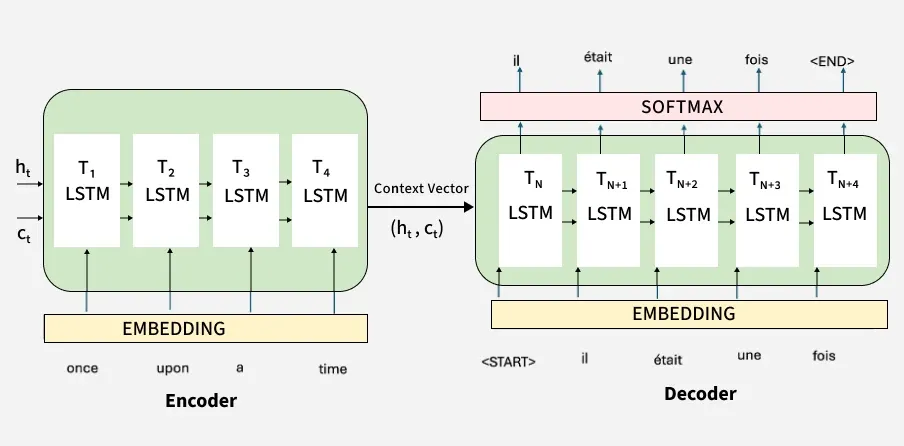My takeaway series follow a Q&A format to explain AI concepts at three levels:
Anyone with general knowledge can understand them.
For anyone who wants to dive into the code implementation details of the concept.
For anyone who wants to understand the mathematics behind the technique.
The Encoder-Decoder architecture is a neural network design pattern. It doesn’t refer to a specific type of neural network but rather a framework that can be implemented using various types of neural networks.
The encoder-decoder architecture consists of encoder and decoder, both of which are neural networks. By its name, any neural network that can process input into a encoded representation and then decode that representation back into a desired output format can be considered an encoder-decoder architecture. However, in the context of deep learning research, it refers to the proposed architecture after 2014 used for sequence-to-sequence tasks, such as machine translation, text summarization, and image captioning.
The encoder-decoder architecture was popularized by a 2014 paper (Sutskever, Vinyals, and Le 2014) from Google. The background was the need to handle sequence-to-sequence tasks in NLP, such as machine translation, where the input and output sequences can have different lengths. It is then advanced by (cho2014learning?) who proposed the attention mechanism to improve the performance of the encoder-decoder architecture.
Since the input receives a sequence of data, the encoder should a type of neural network that can handle sequential data, such as RNN, LSTM. In later years, Transformer introduces the self-attention mechanism, which is more powerful than RNN and LSTM. The entire Transformer is an encoder plus decoder.
The common encoder-decoder architectures include:
- RNN/LSTM-based Encoder-Decoder: The original architecture proposed in the 2014 paper (Sutskever, Vinyals, and Le 2014), using RNNs or LSTMs for both encoder and decoder.
- Transformer: Transformer (Vaswani et al. 2017) is an encoder-decoder architecture, where the encoder and decoder are both composed of layers with self-attention mechanisms.
Following the original meaning of encoder-decoder architecture, both encoder and decoder can receive any kind of data as input and output.
For the context of deep learning, the encoder-decoder architecture is designed for sequence-to-sequence tasks, where the input and output are both variable-length sequences.

Encoder input:
- A sequence of input data
Encoder output:
- A fixed-size context vector
Decoder input:
- The context vector
- A special start-of-sequence data
<SOS>to indicate the beginning of the output sequence.
Decoder output:
- Could be a sequence of output data
<EOS>to indicate the end of the output sequence. - Could be a single output data
<EOS>. This is called autoregression. - Anyway, the final output can be a sequence of data.
Encoder-decoder and autoregression can both receive variable sequences of data as input. However, the model in autoregression can only output one value at a time, but it can autoregressively feed the previously generated output back into itself to generate the next value step by step until it produces the final output. Therefore, autoregression is more of a strategy to extend many-to-one models to output variable-length output sequences.
The decoder in the encoder-decoder architecture can be either many-to-many or many-to-one. If the decoder is many-to-one, it can use autoregression to generate variable-length output sequences. Transformer decoder is an example of many-to-one decoder that uses autoregression to generate output sequences, see AI concept takeaway: Transformer.
The vanilla Encoder-Decoder architecture uses RNN or LSTM for both encoder and decoder. For example, in LSTM-based encoder-decoder:

The encoder LSTMs process the input sequence and use the final hidden state and cell state of the encoder as the context vector. The decoder LSTMs take this context vector as their initial hidden state and cell state to generate the output sequence step by step until they produce the end-of-sequence <EOS>.
The encoder-decoder architecture is used in sequence-to-sequence tasks, including:
- Machine Translation: Translating text from one language to another, e.g., English to French.
- Text Summarization: Generating a concise summary of a longer text document.
- Image Captioning: Generating descriptive captions for images by encoding image features and decoding them into text.
- Speech Recognition: Converting spoken language into written text.